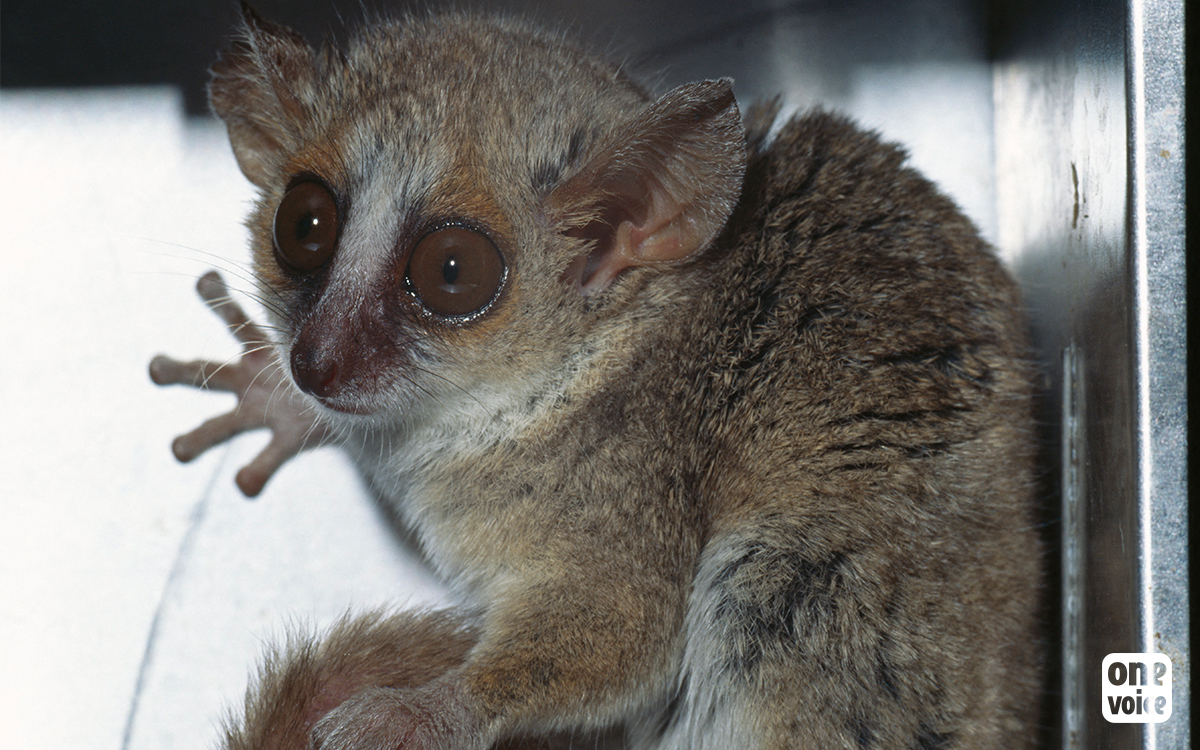
France, champion of animal experimentation: grey mouse lemurs in sight
Researchers in France are still conducting experiments on primates. Specifically, in its branch in Brunoy (Essonne), the French National Museum of Natural History has the largest breeding centre for mouse lemurs in the world. The animals are kept purely to be cut up for science.
Photo: © Gerald Cubitt / Photoshot / Biosphoto
France is renowned for its culture, its intellectuals, its historic towns and villages and its beautiful landscapes… Take Brunoy, in Essonne, for example. Although tensions in some of the surrounding housing estates can sometimes lead to unrest, the centre of this residential suburb retains at least part of its historic heritage, with magnificent buildings and plenty of green space giving rise to its reputation and its charm.
A centre of excellence
This is the setting within which scientists from the National Museum of Natural History (Muséum National d’Histoire Naturelle – MNHN) have, for some fifty years, been carrying out specialist research in the fields of forest ecology and adaptive strategies of living organisms, on the site of the Petit Château, an 18th century mansion.
Primates destined for experiments
It is a fine programme – on paper! However, the walled grounds, now closed to the public, are currently home to the largest primate breeding centre in the world, a community of nearly 500 small lemurs. Their name in English is ‘grey mouse lemur’; in French ‘microcèbe mignon’, meaning ‘charming lemur’, while the Latin name is ‘microcebus murinus’. They are kept for use in animal experiments. Mixed teams of scientists from the MNHN, the CNRS and other research institutes really love these descendants of animals caught in Madagascar, particularly because their small size makes them as easy to handle as mice while they have ‘much more in common with humans than the classic rodent models’.
From observation to euthanasia
This represents a great opportunity for laboratory technicians, who subject them to batteries of tests. These include ‘simple’ behavioural studies, which nevertheless sometimes, as here, consist of leaving the animals in darkness or making days and nights shorter in order to reduce their lifetimes. However, other experiments can be much more invasive, as part of research on inflammation of the eyes, pancreatic lesions, or the development of tumours as part of ageing. Research in neuroscience, in particular on the structure of the brain, cognitive abilities and Alzheimer’s disease, causes terrible suffering to the subjects, which are usually put to sleep afterwards.
Ill-treatment before decapitation
One of the worst studies our team of scientists knows of focused on the ability of grey mouse lemurs to enter torpor to adapt to their environmental conditions. Apparently harmless on the face of it, in practice this study involved keeping individual animals in isolation without enough food for several days. They were then all decapitated and samples were taken from their corpses, frozen and sent to Canada. This is because the MNHN, not content with conducting its own experiments, also offers its ‘materials’ (in this case, lemurs) and its ‘services’ to scientific researchers throughout the world. It even has a website, called IBiSA, which offers ‘services and equipment’ useful to foreign laboratories keen on small lemurs.
An insatiable appetite
So, France is once again standing out as a result of its ferocious appetite for animal experiments, especially on primates. It makes every effort to increase its reputation in this respect at international level. The MNHN has even stated its ambition to renovate its premises and to take early action to extend its animal house to house 800 lemurs. There are more studies and more suffering to come… We have recently written three letters, to the President of the MNHN, the Director of the Essonne department DDPP [whose responsibilities include animal protection], and the Minister of Higher Education, Research and Innovation, asking them to disclose all documents relating to the MNHN centre for the breeding and use of animals for scientific research in Brunoy. A spotlight needs to be shone on what is happening there, and on the suffering of the grey mouse lemurs.